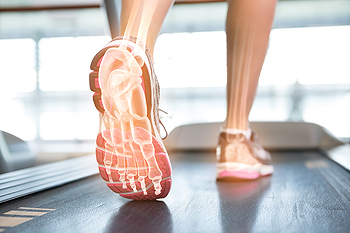Blogs
Foot Conditions That May Develop From Obesity
 Recent research has shown a connection between foot pain and being obese. Foot ailments that may develop as a result of obesity include flat feet, arthritis, diabetes and general heel pain. Obesity may alter the general structure of the foot as a result of the heels and ankles enduring additional pressure caused by excess weight. Exercising may become difficult due to an increase in weight, and this may hinder one's ability to shed the excess pounds. Your feet will benefit if you choose to wear wide and supportive shoes, although there may be a limited selection of larger sizes necessary to accommodate them. Implementing a daily exercise routine and maintaining a healthy lifestyle may aid in combating obesity. This can typically be achieved by slowly beginning to properly stretch and exercise the feet. Please consider scheduling a consultation with a podiatrist for a recommended exercise program that may avoid foot pain.
Recent research has shown a connection between foot pain and being obese. Foot ailments that may develop as a result of obesity include flat feet, arthritis, diabetes and general heel pain. Obesity may alter the general structure of the foot as a result of the heels and ankles enduring additional pressure caused by excess weight. Exercising may become difficult due to an increase in weight, and this may hinder one's ability to shed the excess pounds. Your feet will benefit if you choose to wear wide and supportive shoes, although there may be a limited selection of larger sizes necessary to accommodate them. Implementing a daily exercise routine and maintaining a healthy lifestyle may aid in combating obesity. This can typically be achieved by slowly beginning to properly stretch and exercise the feet. Please consider scheduling a consultation with a podiatrist for a recommended exercise program that may avoid foot pain.
The more you weigh, the harder your feet must work to support your body. If you’re an obese individual and are concerned about your feet, contact Dr. Dean D. Hinners from Illinois. Our doctor can provide the care you need to keep you pain-free and on your feet.
Obesity and Your Feet
People who are overweight are putting more pressure on their ankles, knees, and hips as well as their feet. This unfortunately can lead to variety of different issues.
Problems & Complications Stemming from Obesity
- When the body is overweight, it tries to compensate by changing the way that it moves. An obese person may lean forward and put extra weight on the wrong part of the foot. This puts unnecessary stress on the feet.
- Obese people are also more likely to develop type II diabetes which is a condition that causes a lot of foot problems. People with diabetes often don’t feel the cuts and sores that they may have on their feet, which can lead to more complicated and severe issues.
- Plantar fasciitis is another foot condition that can be caused by obesity. Plantar fasciitis is an inflammation of the tissue along the bottom of the foot, which causes pain and stiffness while walking and climbing stairs.
If you have any questions, please feel free to contact one of our offices located in Metropolis and Eldorado, IL . We offer the newest diagnostic and treatment technologies for all your foot care needs.
Read more about How Obesity Affects Your FeetHow to Treat a Bunion
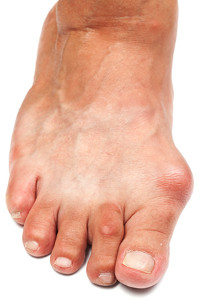 Bunions are typically the result of a bone deformity that affects the toes. The big toe typically leans toward the second toe, and this may cause a bump to form on the bottom of the big toe. Fluid may develop in the surrounding joint, in addition to the skin becoming thickened. This is often a painful condition, and as a result other ailments such as arthritis may develop. Research has shown that it’s beneficial to wear proper shoes that can accommodate the bunion and possibly diminish the pain and discomfort. Relief options may include using adequate padding over the bunion for protection, and wearing shoes that can adjust to the width of your foot. For bunions that have become extremely painful and unmanageable, surgery may be an option to consider. It’s suggested to schedule a consultation with a podiatrist to learn about the best treatment options for you.
Bunions are typically the result of a bone deformity that affects the toes. The big toe typically leans toward the second toe, and this may cause a bump to form on the bottom of the big toe. Fluid may develop in the surrounding joint, in addition to the skin becoming thickened. This is often a painful condition, and as a result other ailments such as arthritis may develop. Research has shown that it’s beneficial to wear proper shoes that can accommodate the bunion and possibly diminish the pain and discomfort. Relief options may include using adequate padding over the bunion for protection, and wearing shoes that can adjust to the width of your foot. For bunions that have become extremely painful and unmanageable, surgery may be an option to consider. It’s suggested to schedule a consultation with a podiatrist to learn about the best treatment options for you.
If you are suffering from bunion pain, contact Dr. Dean D. Hinners of Illinois. Our doctor can provide the care you need to keep you pain-free and on your feet.
What Is a Bunion?
Bunions are painful bony bumps that usually develop on the inside of the foot at the joint of the big toe. As the deformity increases over time, it may become painful to walk and wear shoes. Women are more likely to exacerbate existing bunions since they often wear tight, narrow shoes that shift their toes together. Bunion pain can be relieved by wearing wider shoes with enough room for the toes.
Causes
- Genetics – some people inherit feet that are more prone to bunion development
- Inflammatory Conditions - rheumatoid arthritis and polio may cause bunion development
Symptoms
- Redness and inflammation
- Pain and tenderness
- Callus or corns on the bump
- Restricted motion in the big toe
In order to diagnose your bunion, your podiatrist may ask about your medical history, symptoms, and general health. Your doctor might also order an x-ray to take a closer look at your feet. Nonsurgical treatment options include orthotics, padding, icing, changes in footwear, and medication. If nonsurgical treatments don’t alleviate your bunion pain, surgery may be necessary.
If you have any questions, please feel free to contact one of our offices located in Metropolis and Eldorado, IL . We offer the newest diagnostic and treatment technologies for all your foot care needs.
Read more about BunionsHow Do I Know if I Have Gout?
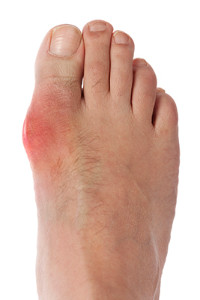 The general cause of a condition referred to as gout is an excess of uric acid that accumulates in the body. The big toe is typically affected, and obvious symptoms may include intense pain, swelling, and redness in the surrounding areas. It will often appear as an inflamed protrusion on the side of the big toe, and may affect the ability to walk. Research has shown that it may be a controllable condition and may occur because of the foods that are ingested. There may be several items that may fall into this category, including the consumption of red meat, an excessive salty foods, and any type of shellfish. Drinking excess alcohol may also lead to the development of gout, in addition to a family history of high blood pressure. Occasionally, there may be specific medical conditions in which the body has difficulty eliminating uric acid, such as kidney or thyroid ailments. The treatment for gout can vary, so it’s advised to consult with a podiatrist for a proper diagnosis.
The general cause of a condition referred to as gout is an excess of uric acid that accumulates in the body. The big toe is typically affected, and obvious symptoms may include intense pain, swelling, and redness in the surrounding areas. It will often appear as an inflamed protrusion on the side of the big toe, and may affect the ability to walk. Research has shown that it may be a controllable condition and may occur because of the foods that are ingested. There may be several items that may fall into this category, including the consumption of red meat, an excessive salty foods, and any type of shellfish. Drinking excess alcohol may also lead to the development of gout, in addition to a family history of high blood pressure. Occasionally, there may be specific medical conditions in which the body has difficulty eliminating uric acid, such as kidney or thyroid ailments. The treatment for gout can vary, so it’s advised to consult with a podiatrist for a proper diagnosis.
Gout is a painful condition that can be treated. If you are seeking treatment, contact Dr. Dean D. Hinners from Illinois. Our doctor will treat your foot and ankle needs.
What Is Gout?
Gout is a form of arthritis that is characterized by sudden, severe attacks of pain, redness, and tenderness in the joints. The condition usually affects the joint at the base of the big toe. A gout attack can occur at any random time, such as the middle of the night while you are asleep.
Symptoms
- Intense Joint Pain - Usually around the large joint of your big toe, and it most severe within the first four to twelve hours
- Lingering Discomfort - Joint discomfort may last from a few days to a few weeks
- Inflammation and Redness -Affected joints may become swollen, tender, warm and red
- Limited Range of Motion - May experience a decrease in joint mobility
Risk Factors
- Genetics - If family members have gout, you’re more likely to have it
- Medications - Diuretic medications can raise uric acid levels
- Gender/Age - Gout is more common in men until the age of 60. It is believed that estrogen protects women until that point
- Diet - Eating red meat and shellfish increases your risk
- Alcohol - Having more than two alcoholic drinks per day increases your risk
- Obesity - Obese people are at a higher risk for gout
Prior to visiting your podiatrist to receive treatment for gout, there are a few things you should do beforehand. If you have gout you should write down your symptoms--including when they started and how often you experience them, important medical information you may have, and any questions you may have. Writing down these three things will help your podiatrist in assessing your specific situation so that he or she may provide the best route of treatment for you.
If you have any questions, please feel free to contact one of our offices located in Metropolis and Eldorado, IL . We offer the newest diagnostic and treatment technologies for all your foot care needs.
Read more about Everything You Need to Know About GoutThe Differences Between a Break and a Sprain
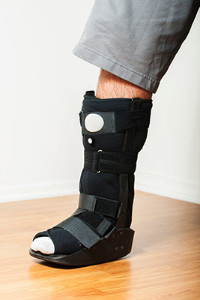 Research has shown the foot consists of 26 bones. If you have endured a fall resulting in severe pain in your foot, one of these bones may have been fractured, and this is often referred to as a broken foot. General symptoms of a sprain and a fracture typically include swelling and pain, so it’s advised to be able to differentiate between the two. This can be accomplished by comparing both feet and looking for breaks in the skin, which may result from a broken bone. Additional indications of a broken foot may be a feeling of dizziness, extreme discomfort, and pain while attempting to walk, or feeling a bone in the foot snap as the injury occurs. Temporary relief can be found in resting the foot by limiting attempts to walk, in addition to elevating the leg as soon as possible. A proper diagnosis will typically consist of performing an X-ray, which can determine the severity of the fracture. Please consult with a podiatrist for proper treatment options, which may include a walking boot or cast.
Research has shown the foot consists of 26 bones. If you have endured a fall resulting in severe pain in your foot, one of these bones may have been fractured, and this is often referred to as a broken foot. General symptoms of a sprain and a fracture typically include swelling and pain, so it’s advised to be able to differentiate between the two. This can be accomplished by comparing both feet and looking for breaks in the skin, which may result from a broken bone. Additional indications of a broken foot may be a feeling of dizziness, extreme discomfort, and pain while attempting to walk, or feeling a bone in the foot snap as the injury occurs. Temporary relief can be found in resting the foot by limiting attempts to walk, in addition to elevating the leg as soon as possible. A proper diagnosis will typically consist of performing an X-ray, which can determine the severity of the fracture. Please consult with a podiatrist for proper treatment options, which may include a walking boot or cast.
A broken foot requires immediate medical attention and treatment. If you need your feet checked, contact Dr. Dean D. Hinners from Illinois. Our doctor can provide the care you need to keep you pain-free and on your feet.
Broken Foot Causes, Symptoms, and Treatment
A broken foot is caused by one of the bones in the foot typically breaking when bended, crushed, or stretched beyond its natural capabilities. Usually the location of the fracture indicates how the break occurred, whether it was through an object, fall, or any other type of injury.
Common Symptoms of Broken Feet:
- Bruising
- Pain
- Redness
- Swelling
- Blue in color
- Numbness
- Cold
- Misshapen
- Cuts
- Deformities
Those that suspect they have a broken foot shoot seek urgent medical attention where a medical professional could diagnose the severity.
Treatment for broken bones varies depending on the cause, severity and location. Some will require the use of splints, casts or crutches while others could even involve surgery to repair the broken bones. Personal care includes the use of ice and keeping the foot stabilized and elevated.
If you have any questions please feel free to contact one of our offices located in Metropolis and Eldorado, IL . We offer the newest diagnostic and treatment technologies for all your foot and ankle needs.
Read more about Causes, Symptoms, and Treatment for a Broken FootSymptoms of an Achilles Tendon Injury
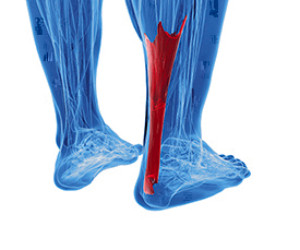 If you have severe pain in the back of your heel, you may have an Achilles tendon injury. It is the body’s thickest tendon, and it connects the back of the heel to the calf muscles. When the foot pushes forward while running, the Achilles tendon absorbs the force necessary for this to be accomplished. The beginning of an injury is typically represented by a dull ache in the back of the heel, and the pain will increase in severity if the running activity continues. There may be several causes for this type of injury to occur, including a poor range of motion in the ankle, calf muscles that are weakened, and having flat feet. Specific exercises that are practiced may aid in the healing of an Achilles tendon injury, and it’s recommended to see a podiatrist for a proper examination.
If you have severe pain in the back of your heel, you may have an Achilles tendon injury. It is the body’s thickest tendon, and it connects the back of the heel to the calf muscles. When the foot pushes forward while running, the Achilles tendon absorbs the force necessary for this to be accomplished. The beginning of an injury is typically represented by a dull ache in the back of the heel, and the pain will increase in severity if the running activity continues. There may be several causes for this type of injury to occur, including a poor range of motion in the ankle, calf muscles that are weakened, and having flat feet. Specific exercises that are practiced may aid in the healing of an Achilles tendon injury, and it’s recommended to see a podiatrist for a proper examination.
Achilles tendon injuries need immediate attention to avoid future complications. If you have any concerns, contact Dr. Dean D. Hinners of Illinois. Our doctor can provide the care you need to keep you pain-free and on your feet.
What Is the Achilles Tendon?
The Achilles tendon is a tendon that connects the lower leg muscles and calf to the heel of the foot. It is the strongest tendon in the human body and is essential for making movement possible. Because this tendon is such an integral part of the body, any injuries to it can create immense difficulties and should immediately be presented to a doctor.
What Are the Symptoms of an Achilles Tendon Injury?
There are various types of injuries that can affect the Achilles tendon. The two most common injuries are Achilles tendinitis and ruptures of the tendon.
Achilles Tendinitis Symptoms
- Inflammation
- Dull to severe pain
- Increased blood flow to the tendon
- Thickening of the tendon
Rupture Symptoms
- Extreme pain and swelling in the foot
- Total immobility
Treatment and Prevention
Achilles tendon injuries are diagnosed by a thorough physical evaluation, which can include an MRI. Treatment involves rest, physical therapy, and in some cases, surgery. However, various preventative measures can be taken to avoid these injuries, such as:
- Thorough stretching of the tendon before and after exercise
- Strengthening exercises like calf raises, squats, leg curls, leg extensions, leg raises, lunges, and leg presses
If you have any questions please feel free to contact one of our offices located in Metropolis and Eldorado, IL . We offer the newest diagnostic tools and technology to treat your foot and ankle needs.
Read more about What are Achilles Tendon InjuriesCan High Heels Damage My Feet?
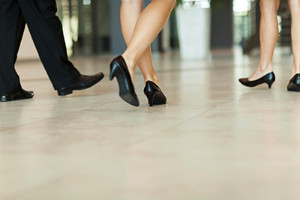 Many women choose to wear high heels to increase confidence, height, and the muscle tone of the leg. These perceived benefits may not outweigh the damage the feet may incur as a result of wearing this type of shoe. The arch of the foot is typically affected, which may lead to pain and discomfort. When the heel of the foot is raised, the ligaments of the arch become weak, and may result in the development of a condition referred to as fallen arches or flat feet. There is generally not enough room for the toes to move about freely, and this may result in a conditions such as hammertoe. The feet absorb the body’s mass, and the weight becomes redistributed, which affects the ball of the foot when high heels are worn. If high heels are frequently worn, the Achilles tendon may become shorter, causing severe pain. Recent research has suggested that wearing shoes with a shorter heel can prevent many foot injuries from occurring.
Many women choose to wear high heels to increase confidence, height, and the muscle tone of the leg. These perceived benefits may not outweigh the damage the feet may incur as a result of wearing this type of shoe. The arch of the foot is typically affected, which may lead to pain and discomfort. When the heel of the foot is raised, the ligaments of the arch become weak, and may result in the development of a condition referred to as fallen arches or flat feet. There is generally not enough room for the toes to move about freely, and this may result in a conditions such as hammertoe. The feet absorb the body’s mass, and the weight becomes redistributed, which affects the ball of the foot when high heels are worn. If high heels are frequently worn, the Achilles tendon may become shorter, causing severe pain. Recent research has suggested that wearing shoes with a shorter heel can prevent many foot injuries from occurring.
High heels have a history of causing foot and ankle problems. If you have any concerns about your feet or ankles, contact Dr. Dean D. Hinners from Illinois. Our doctor can provide the care you need to keep you pain-free and on your feet.
Effects of High Heels on the Feet
High heels are popular shoes among women because of their many styles and societal appeal. Despite this, high heels can still cause many health problems if worn too frequently.
Which Parts of My Body Will Be Affected by High Heels?
- Ankle Joints
- Achilles Tendon – May shorten and stiffen with prolonged wear
- Balls of the Feet
- Knees – Heels cause the knees to bend constantly, creating stress on them
- Back – They decrease the spine’s ability to absorb shock, which may lead to back pain. The vertebrae of the lower back may compress.
What Kinds of Foot Problems Can Develop from Wearing High Heels?
- Corns
- Calluses
- Hammertoe
- Bunions
- Morton’s Neuroma
- Plantar Fasciitis
How Can I Still Wear High Heels and Maintain Foot Health?
If you want to wear high heeled shoes, make sure that you are not wearing them every day, as this will help prevent long term physical problems. Try wearing thicker heels as opposed to stilettos to distribute weight more evenly across the feet. Always make sure you are wearing the proper shoes for the right occasion, such as sneakers for exercising. If you walk to work, try carrying your heels with you and changing into them once you arrive at work. Adding inserts to your heels can help cushion your feet and absorb shock. Full foot inserts or metatarsal pads are available.
If you have any questions please feel free to contact one of our offices located in Metropolis and Eldorado, IL . We offer the newest diagnostic and treatment technologies for all your foot and ankle needs.
Read more about Effect of High Heels on the FeetCauses of Heel Spurs
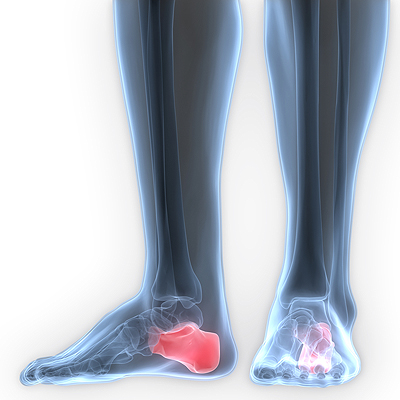 If a tiny bone protrudes from the heel of the foot, you may have what is known as a heel spur. This condition occurs when the portion of tissue that connects the heel to the toes sustains an injury. Early symptoms may consist of swelling, pain, and general discomfort, and these typically occur while walking. Other contributing reasons for this condition can include weight gain or if the wrong shoes are worn. To properly diagnose this condition, an X-ray is typically performed to view the bone protrusion. There are several treatment options available, and these may include properly stretching the calf muscles, losing excess weight, and wearing shoes that fit correctly. It’s advised to schedule a consultation with a podiatrist to receive a proper diagnosis and to learn about the best treatment options for your heel spur.
If a tiny bone protrudes from the heel of the foot, you may have what is known as a heel spur. This condition occurs when the portion of tissue that connects the heel to the toes sustains an injury. Early symptoms may consist of swelling, pain, and general discomfort, and these typically occur while walking. Other contributing reasons for this condition can include weight gain or if the wrong shoes are worn. To properly diagnose this condition, an X-ray is typically performed to view the bone protrusion. There are several treatment options available, and these may include properly stretching the calf muscles, losing excess weight, and wearing shoes that fit correctly. It’s advised to schedule a consultation with a podiatrist to receive a proper diagnosis and to learn about the best treatment options for your heel spur.
Heel spurs can be incredibly painful and sometimes may make you unable to participate in physical activities. To get medical care for your heel spurs, contact Dr. Dean D. Hinners from Illinois. Our doctor will do everything possible to treat your condition.
Heels Spurs
Heel spurs are formed by calcium deposits on the back of the foot where the heel is. This can also be caused by small fragments of bone breaking off one section of the foot, attaching onto the back of the foot. Heel spurs can also be bone growth on the back of the foot and may grow in the direction of the arch of the foot.
Older individuals usually suffer from heel spurs and pain sometimes intensifies with age. One of the main condition's spurs are related to is plantar fasciitis.
Pain
The pain associated with spurs is often because of weight placed on the feet. When someone is walking, their entire weight is concentrated on the feet. Bone spurs then have the tendency to affect other bones and tissues around the foot. As the pain continues, the feet will become tender and sensitive over time.
Treatments
There are many ways to treat heel spurs. If one is suffering from heel spurs in conjunction with pain, there are several methods for healing. Medication, surgery, and herbal care are some options.
If you have any questions feel free to contact one of our offices located in Metropolis and Eldorado, IL . We offer the latest in diagnostic and treatment technology to meet your needs.
Read more about Heel SpursWhat Are The Treatment Options for Bunions?
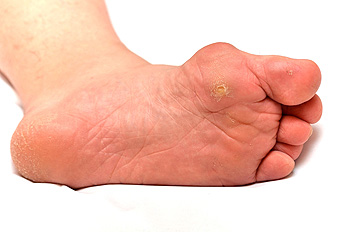 A bunion is often easily identified because of the large bony protrusion that appears on the side of the big toe.The skin on top of the bone may look red and and can become painful due to the friction the toes experience from shoes. Bunions can be caused by conditions such as arthritis or an abnormal foot structure that may possibly be inherited. The condition can also be made worse by wearing shoes that fit poorly. If you suffer from this ailment, it’s recommended to wear wider shoes to accommodate the affected toe. A more permanent solution would be surgery, in which the bunion is removed. If you have this condition, please consult with a podiatrist for additional information and to determine the best treatment option for you.
A bunion is often easily identified because of the large bony protrusion that appears on the side of the big toe.The skin on top of the bone may look red and and can become painful due to the friction the toes experience from shoes. Bunions can be caused by conditions such as arthritis or an abnormal foot structure that may possibly be inherited. The condition can also be made worse by wearing shoes that fit poorly. If you suffer from this ailment, it’s recommended to wear wider shoes to accommodate the affected toe. A more permanent solution would be surgery, in which the bunion is removed. If you have this condition, please consult with a podiatrist for additional information and to determine the best treatment option for you.
If you are suffering from bunions, contact Dr. Dean D. Hinners of Illinois. Our doctor can provide the care you need to keep you pain-free and on your feet.
What Is a Bunion?
A bunion is formed of swollen tissue or an enlargement of boney growth, usually located at the base joint of the toe that connects to the foot. The swelling occurs due to the bones in the big toe shifting inward, which impacts the other toes of the foot. This causes the area around the base of the big toe to become inflamed and painful.
Why Do Bunions Form?
Genetics – Susceptibility to bunions are often hereditary
Stress on the feet – Poorly fitted and uncomfortable footwear that places stress on feet, such as heels, can worsen existing bunions
How Are Bunions Diagnosed?
Doctors often perform two tests – blood tests and x-rays – when trying to diagnose bunions, especially in the early stages of development. Blood tests help determine if the foot pain is being caused by something else, such as arthritis, while x-rays provide a clear picture of your bone structure to your doctor.
How Are Bunions Treated?
- Refrain from wearing heels or similar shoes that cause discomfort
- Select wider shoes that can provide more comfort and reduce pain
- Anti-inflammatory and pain management drugs
- Orthotics or foot inserts
- Surgery
If you have any questions, please feel free to contact one of our offices located in Metropolis and Eldorado, IL . We offer the newest diagnostic and treatment technologies for all your foot care needs.
Read more about BunionsCommon Symptoms of Sesamoiditis
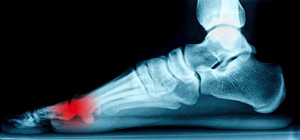 If you experience pain under the ball of your foot, you may have a condition that is referred to as sesamoiditis. There are small bones that exist within the sole of the foot, and a possible injury can cause inflammation to the tendons that connect the big toe to these bones. If this should happen, common symptoms may include pain being present while walking and running, in addition to experiencing difficulty standing on tiptoes. The skin typically does not show any signs of being swollen or red because the injured bones and tendons are deep within the foot. It generally stems from beginning any new activity that may involve running and jumping, typically indicative of a new sport. If you feel you are suffering from this ailment, it’s suggested that resting the foot by reducing the activity will be beneficial in promoting healing. Please consider a consultation with a podiatrist for more information about sesamoiditis.
If you experience pain under the ball of your foot, you may have a condition that is referred to as sesamoiditis. There are small bones that exist within the sole of the foot, and a possible injury can cause inflammation to the tendons that connect the big toe to these bones. If this should happen, common symptoms may include pain being present while walking and running, in addition to experiencing difficulty standing on tiptoes. The skin typically does not show any signs of being swollen or red because the injured bones and tendons are deep within the foot. It generally stems from beginning any new activity that may involve running and jumping, typically indicative of a new sport. If you feel you are suffering from this ailment, it’s suggested that resting the foot by reducing the activity will be beneficial in promoting healing. Please consider a consultation with a podiatrist for more information about sesamoiditis.
Sesamoiditis is an unpleasant foot condition characterized by pain in the balls of the feet. If you think you’re struggling with sesamoiditis, contact Dr. Dean D. Hinners of Illinois. Our doctor will treat your condition thoroughly and effectively.
Sesamoiditis
Sesamoiditis is a condition of the foot that affects the ball of the foot. It is more common in younger people than it is in older people. It can also occur with people who have begun a new exercise program, since their bodies are adjusting to the new physical regimen. Pain may also be caused by the inflammation of tendons surrounding the bones. It is important to seek treatment in its early stages because if you ignore the pain, this condition can lead to more serious problems such as severe irritation and bone fractures.
Causes of Sesamoiditis
- Sudden increase in activity
- Increase in physically strenuous movement without a proper warm up or build up
- Foot structure: those who have smaller, bonier feet or those with a high arch may be more susceptible
Treatment for sesamoiditis is non-invasive and simple. Doctors may recommend a strict rest period where the patient forgoes most physical activity. This will help give the patient time to heal their feet through limited activity. For serious cases, it is best to speak with your doctor to determine a treatment option that will help your specific needs.
If you have any questions please feel free to contact one of our offices located in Metropolis and Eldorado, IL . We offer the newest diagnostic and treatment technologies for all your foot and ankle needs.
Read more about SesamoiditisThe Importance of Having Strong Feet
The feet are often considered the foundation of the body. There are numerous benefits to having strong feet, and this can be encouraged by performing proper foot exercises. Additionally, flexibility can be attained by exercising the feet, and this may positively affect balance and support of the body’s weight. There are simple ways to accomplish this, and several of these stretching exercises involve the use of a towel. When the calves are stretched, the benefits extend to the ankles and feet, which can improve circulation. While seated, fully extend the leg, wrap the towel around the sole of the foot, and gently pull forward. Typically, you’ll feel moderate tension, and it’s beneficial to hold this position for 30 seconds. These stretches not only feel good, but will strengthen the muscles and tendons in the feet. Please consider scheduling a consultation with a podiatrist to learn more about the benefits of exercising the feet.
Exercising your feet regularly with the proper foot wear is a great way to prevent injuries and build strength. If you have any concerns about your feet, contact Dr. Dean D. Hinners from Illinois. Our doctor can provide the care you need to keep you pain-free and on your feet.
Exercise for Your Feet
Exercise for your feet can help you gain strength, mobility and flexibility in your feet. They say that strengthening your feet can be just as rewarding as strengthening another part of the body. Your feet are very important, and we often forget about them in our daily tasks. But it is because of our feet that are we able to get going and do what we need to. For those of us fortunate enough to not have any foot problems, it is an important gesture to take care of them to ensure good health in the long run.
Some foot health exercises can include ankle pumps, tip-toeing, toe rises, lifting off the floor doing reps and sets, and flexing the toes. It is best to speak with Our doctor to determine an appropriate regimen for your needs. Everyone’s needs and bodies are different, and the activities required to maintain strength in the feet vary from individual to individual.
Once you get into a routine of doing regular exercise, you may notice a difference in your feet and how strong they may become.
If you have any questions please feel free to contact one of our offices located in Metropolis and Eldorado, IL . We offer the newest diagnostic and treatment technologies for all your foot and ankle needs.
Read more about Exercise for Your FeetMore...
How to Prevent Toenail Fungus
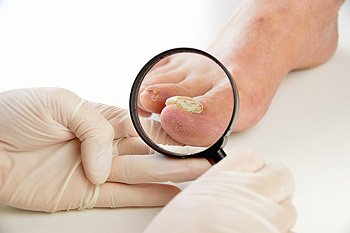 A fungal infection of the toenail is a common condition that many people are afflicted with. It’s prevalent in people who are diabetic or who have compromised immune systems, in addition to enduring any trauma that may have affected the toes. This type of fungus generally lives in moist environments and is typically found on public shower room floors. Some of the symptoms that may be experienced can include the nails becoming thick, yellow or brown, and the nails lifting up, breaking easily. It’s possible to prevent this fungus from invading your toenails by keeping your feet clean and dry, especially in between the toes. Additionally, wearing proper footwear in public showers will also aid in the toes being protected. Maintaining clean and short nails may be beneficial in controlling this condition. Please consider a consultation with a podiatrist for information and treatment options that are correct for you.
A fungal infection of the toenail is a common condition that many people are afflicted with. It’s prevalent in people who are diabetic or who have compromised immune systems, in addition to enduring any trauma that may have affected the toes. This type of fungus generally lives in moist environments and is typically found on public shower room floors. Some of the symptoms that may be experienced can include the nails becoming thick, yellow or brown, and the nails lifting up, breaking easily. It’s possible to prevent this fungus from invading your toenails by keeping your feet clean and dry, especially in between the toes. Additionally, wearing proper footwear in public showers will also aid in the toes being protected. Maintaining clean and short nails may be beneficial in controlling this condition. Please consider a consultation with a podiatrist for information and treatment options that are correct for you.
For more information about treatment, contact Dr. Dean D. Hinners of Illinois. Our doctor can provide the care you need to keep you pain-free and on your feet.
Toenail Fungus Treatment
Toenail fungus is a condition that affects many people and can be especially hard to get rid of. Fortunately, there are several methods to go about treating and avoiding it.
Antifungals & Deterrence
Oral antifungal medicine has been shown to be effective in many cases. It is important to consult with a podiatrist to determine the proper regiment for you, or potentially explore other options.
Applying foot powder on the feet and shoes helps keep the feet free of moisture and sweat.
Sandals or open toed shoes – Wearing these will allow air movement and help keep feet dry. They also expose your feet to light, which fungus cannot tolerate. Socks with moisture wicking material also help as well.
If you have any questions please feel free to contact one of our offices located in Metropolis and Eldorado, IL . We offer the newest diagnostic tools and technology to treat your foot and ankle needs.
Read more about Toenail FungusPreventive Measures for Plantar Hyperhidrosis
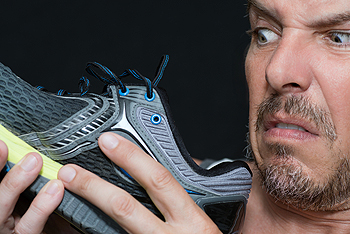 There are numerous sweat glands in the body, also known as eccrine glands. When these glands are overactive, excessive sweating can come from the feet, which is a condition known as plantar hyperhidrosis. Numerous side effects may often accompany this ailment because the skin is consistently moist. These may include scaling of the feet, especially in between the toes. Additionally, inflammation of the skin, blisters, and itchy feet are among the many conditions that can occur from hyperhidrosis. If the type of footwear that is worn includes insulated or waterproof shoes, the feet can produce an abnormal amount of sweat resulting in discomfort. It’s important to choose shoes that allows the feet to breath, and this will generally help to control any excessive sweating that may occur. A consultation with a podiatrist may be suggested for information and advice on how to control plantar hyperhidrosis.
There are numerous sweat glands in the body, also known as eccrine glands. When these glands are overactive, excessive sweating can come from the feet, which is a condition known as plantar hyperhidrosis. Numerous side effects may often accompany this ailment because the skin is consistently moist. These may include scaling of the feet, especially in between the toes. Additionally, inflammation of the skin, blisters, and itchy feet are among the many conditions that can occur from hyperhidrosis. If the type of footwear that is worn includes insulated or waterproof shoes, the feet can produce an abnormal amount of sweat resulting in discomfort. It’s important to choose shoes that allows the feet to breath, and this will generally help to control any excessive sweating that may occur. A consultation with a podiatrist may be suggested for information and advice on how to control plantar hyperhidrosis.
If you are suffering from hyperhidrosis contact Dr. Dean D. Hinners of Illinois. Our doctor can provide the care you need to attend to all of your foot and ankle needs.
Hyperhidrosis of the Feet
Hyperhidrosis is a rare disorder that can cause people to have excessive sweating of their feet. This can usually occur all on its own without rigorous activity involved. People who suffer from hyperhidrosis may also experience sweaty palms.
Although it is said that sweating is a healthy process meant to cool down the body temperature and to maintain a proper internal temperature, hyperhidrosis may prove to be a huge hindrance on a person’s everyday life.
Plantar hyperhidrosis is considered to be the main form of hyperhidrosis. Secondary hyperhidrosis can refer to sweating that occurs in areas other than the feet or hands and armpits. Often this may be a sign of it being related to another medical condition such as menopause, hyperthyroidism and even Parkinson’s disease.
In order to alleviate this condition, it is important to see your doctor so that they may prescribe the necessary medications so that you can begin to live a normal life again. If this is left untreated, it is said that it will persist throughout an individual’s life.
A last resort approach would be surgery, but it is best to speak with your doctor to find out what may be the best treatment for you.
If you have any questions please feel free to contact one of our offices located in Metropolis and Eldorado, IL . We offer the newest diagnostic and treatment technologies for all your foot and ankle needs.
Read more about Hyperhidrosis of the FeetSymptoms of a Broken Foot
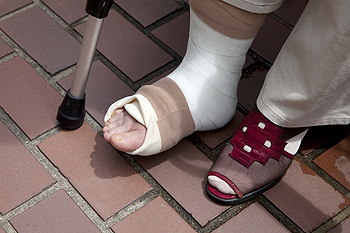 There are many ways to break your foot, and we wouldn’t recommend any of them. Severe pain when walking, in addition to bruising, are common symptoms of a foot that has been fractured. If limping occurs and the foot is tender when touched, these may be additional signs of a break in the bone. Obvious symptoms may include a deformity of the foot, which may indicate a joint dislocation. When the structure of the bone has been damaged, an x-ray is generally used to determine the extent of the injury. Once diagnosed, the injury may be treated by wearing a boot to help eliminate weight that is placed on the foot. A consultation with a podiatrist is advised for a proper diagnosis and additional treatment options.
There are many ways to break your foot, and we wouldn’t recommend any of them. Severe pain when walking, in addition to bruising, are common symptoms of a foot that has been fractured. If limping occurs and the foot is tender when touched, these may be additional signs of a break in the bone. Obvious symptoms may include a deformity of the foot, which may indicate a joint dislocation. When the structure of the bone has been damaged, an x-ray is generally used to determine the extent of the injury. Once diagnosed, the injury may be treated by wearing a boot to help eliminate weight that is placed on the foot. A consultation with a podiatrist is advised for a proper diagnosis and additional treatment options.
A broken foot requires immediate medical attention and treatment. If you need your feet checked, contact Dr. Dean D. Hinners from Illinois. Our doctor can provide the care you need to keep you pain-free and on your feet.
Broken Foot Causes, Symptoms, and Treatment
A broken foot is caused by one of the bones in the foot typically breaking when bended, crushed, or stretched beyond its natural capabilities. Usually the location of the fracture indicates how the break occurred, whether it was through an object, fall, or any other type of injury.
Common Symptoms of Broken Feet:
- Bruising
- Pain
- Redness
- Swelling
- Blue in color
- Numbness
- Cold
- Misshapen
- Cuts
- Deformities
Those that suspect they have a broken foot shoot seek urgent medical attention where a medical professional could diagnose the severity.
Treatment for broken bones varies depending on the cause, severity and location. Some will require the use of splints, casts or crutches while others could even involve surgery to repair the broken bones. Personal care includes the use of ice and keeping the foot stabilized and elevated.
If you have any questions please feel free to contact one of our offices located in Metropolis and Eldorado, IL . We offer the newest diagnostic and treatment technologies for all your foot and ankle needs.
Read more about Causes, Symptoms, and Treatment for a Broken FootDoes My Child Have Flat Feet?
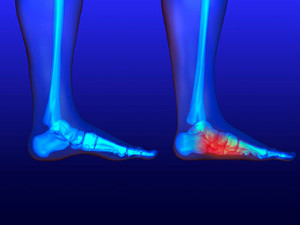 If the arch of the foot has not developed, causing the entire bottom of the foot to touch the ground while walking or running, your child may have a condition referred to as flat feet. Despite the fact that the majority of babies are born with flat feet, most typically outgrow it and the arches are fully formed by age 10. You may notice extreme flexibility in your child’s feet, possibly caused by soft ligaments, often resulting in fallen arches, or flat feet. This condition typically happens from a predisposed inherited trait, and little or no pain is generally experienced. If your child complains of any discomfort, there may be other foot issues present, and you may want to consider a consultation with a podiatrist for a proper diagnosis.
If the arch of the foot has not developed, causing the entire bottom of the foot to touch the ground while walking or running, your child may have a condition referred to as flat feet. Despite the fact that the majority of babies are born with flat feet, most typically outgrow it and the arches are fully formed by age 10. You may notice extreme flexibility in your child’s feet, possibly caused by soft ligaments, often resulting in fallen arches, or flat feet. This condition typically happens from a predisposed inherited trait, and little or no pain is generally experienced. If your child complains of any discomfort, there may be other foot issues present, and you may want to consider a consultation with a podiatrist for a proper diagnosis.
Flatfoot is a condition many people suffer from. If you have flat feet, contact Dr. Dean D. Hinners from Illinois. Our doctor will treat your foot and ankle needs.
What Are Flat Feet?
Flatfoot is a condition in which the arch of the foot is depressed and the sole of the foot is almost completely in contact with the ground. About 20-30% of the population generally has flat feet because their arches never formed during growth.
Conditions & Problems:
Having flat feet makes it difficult to run or walk because of the stress placed on the ankles.
Alignment – The general alignment of your legs can be disrupted, because the ankles move inward which can cause major discomfort.
Knees – If you have complications with your knees, flat feet can be a contributor to arthritis in that area.
Symptoms
- Pain around the heel or arch area
- Trouble standing on the tip toe
- Swelling around the inside of the ankle
- Flat look to one or both feet
- Having your shoes feel uneven when worn
Treatment
If you are experiencing pain and stress on the foot you may weaken the posterior tibial tendon, which runs around the inside of the ankle.
If you have any questions please feel free to contact one of our offices located in Metropolis and Eldorado, IL . We offer the newest diagnostic and treatment technologies for all your foot and ankle needs.
Read more about Flat Feet